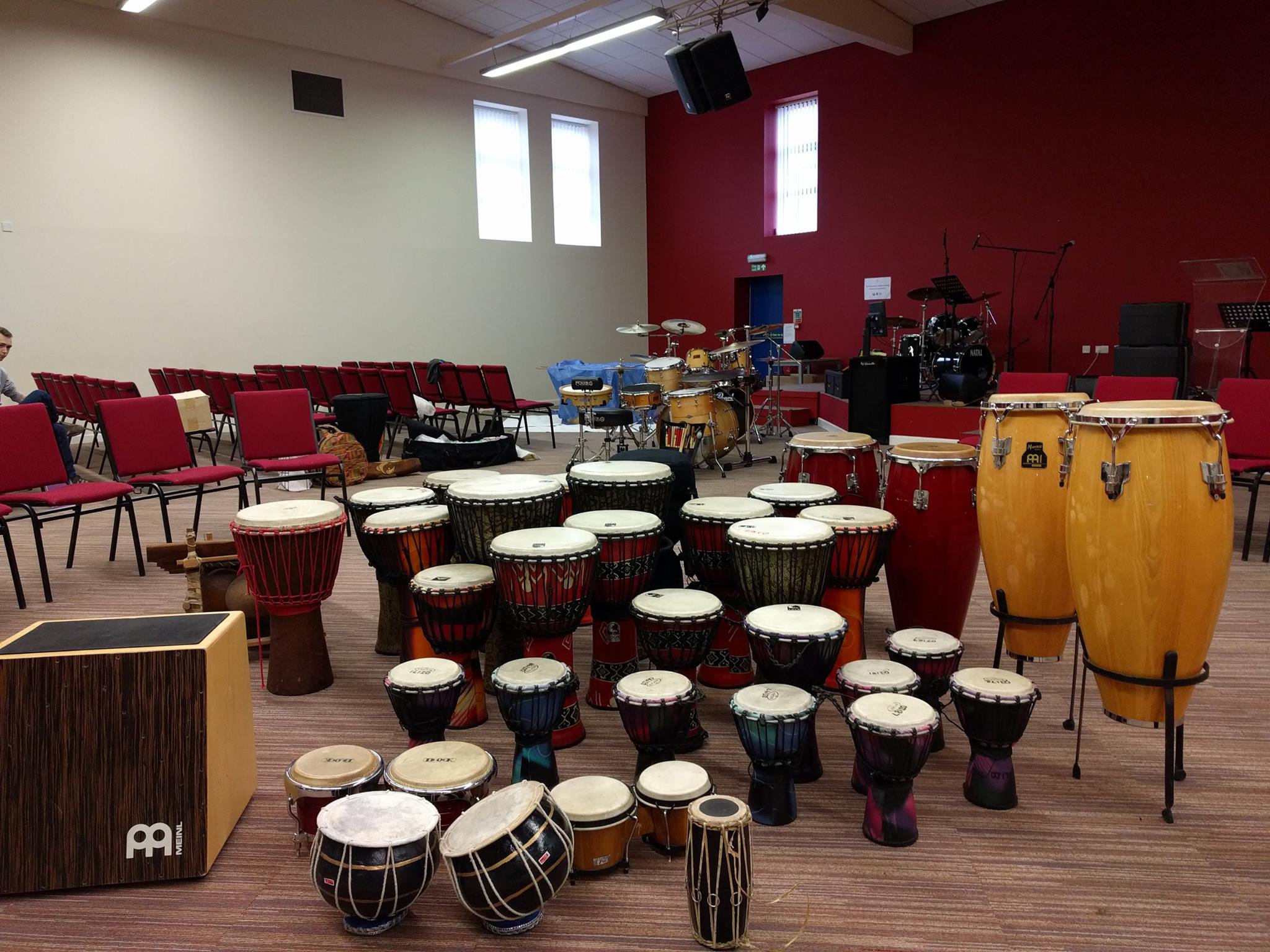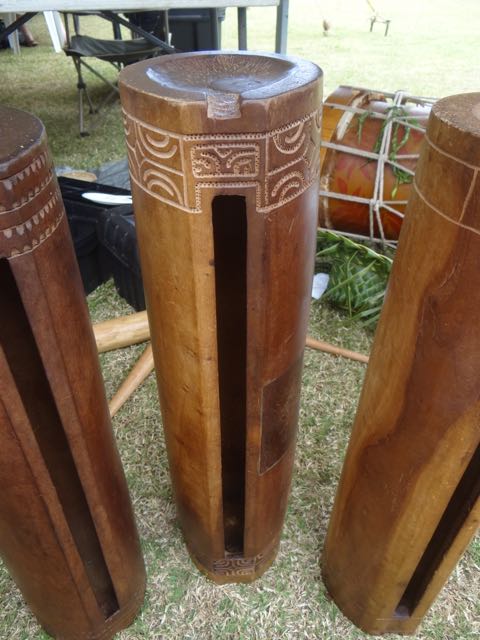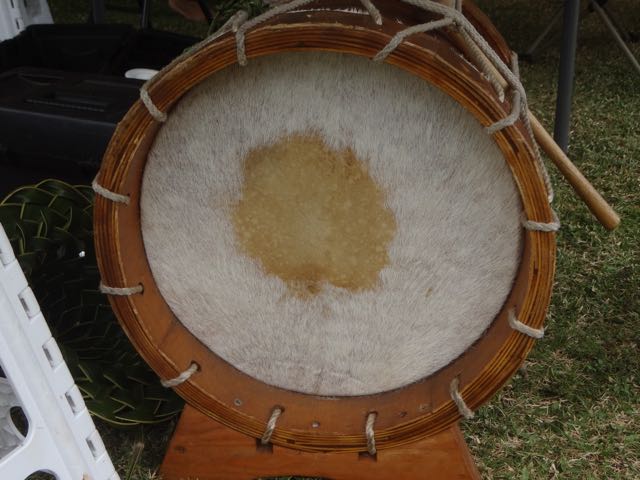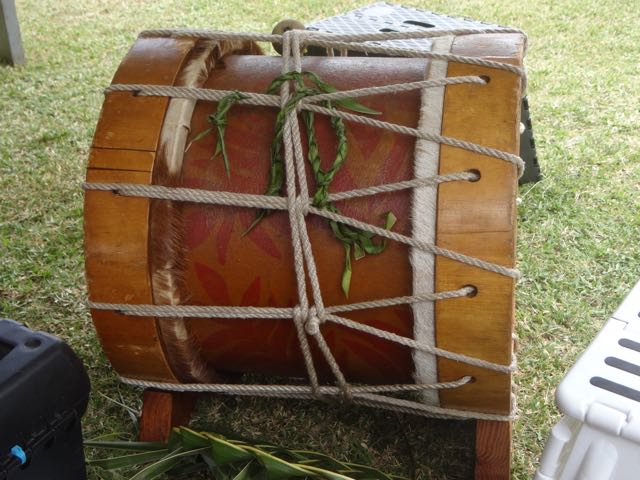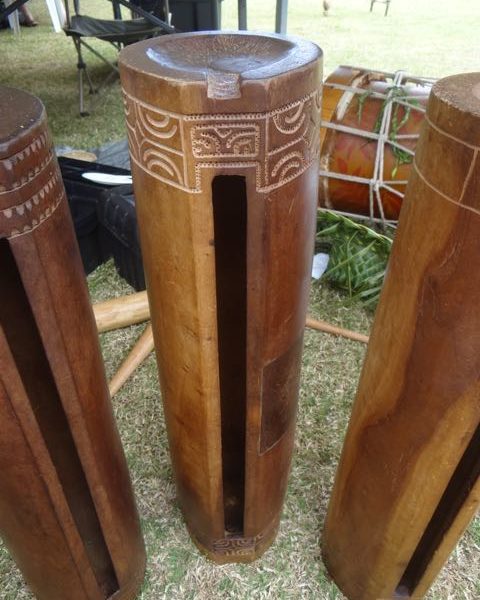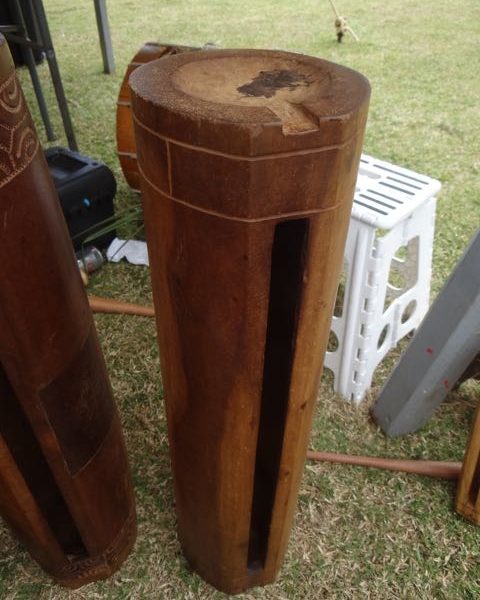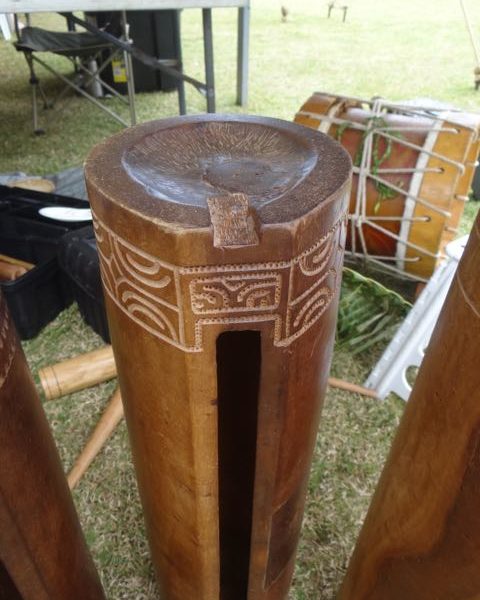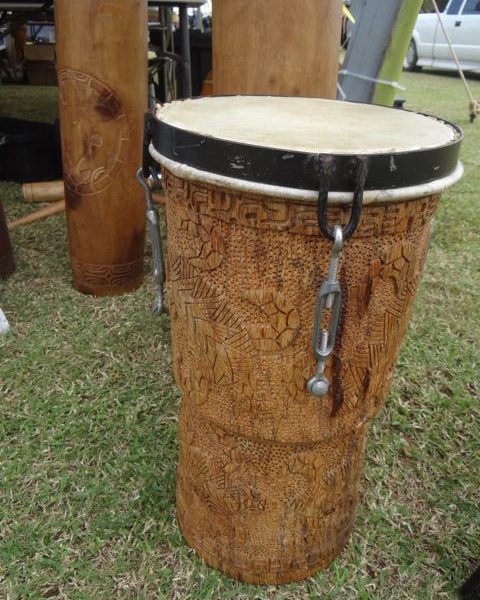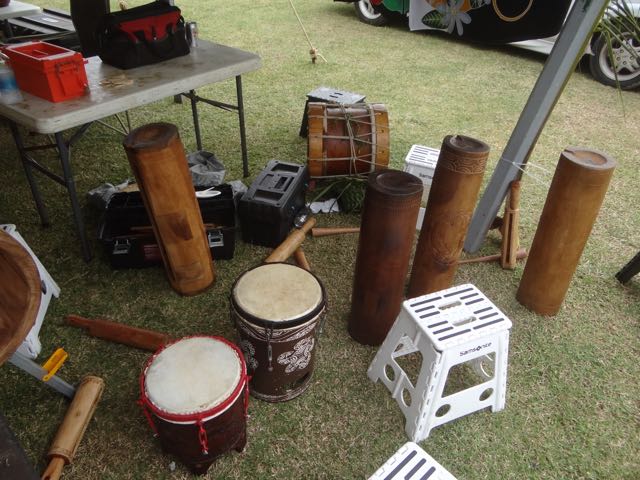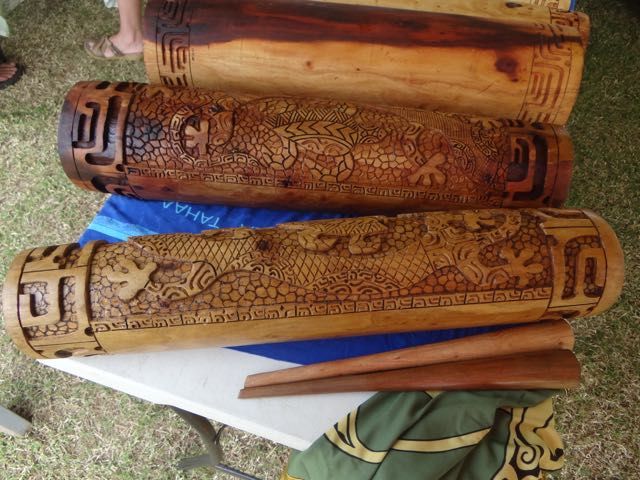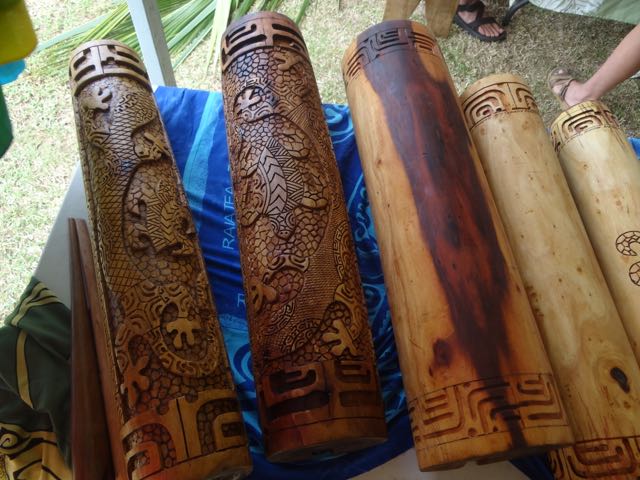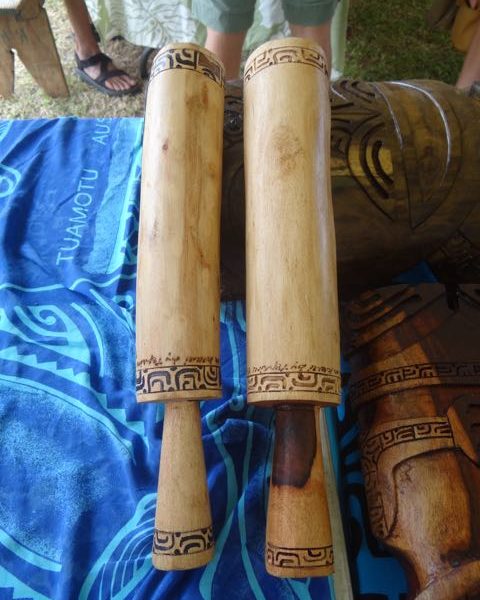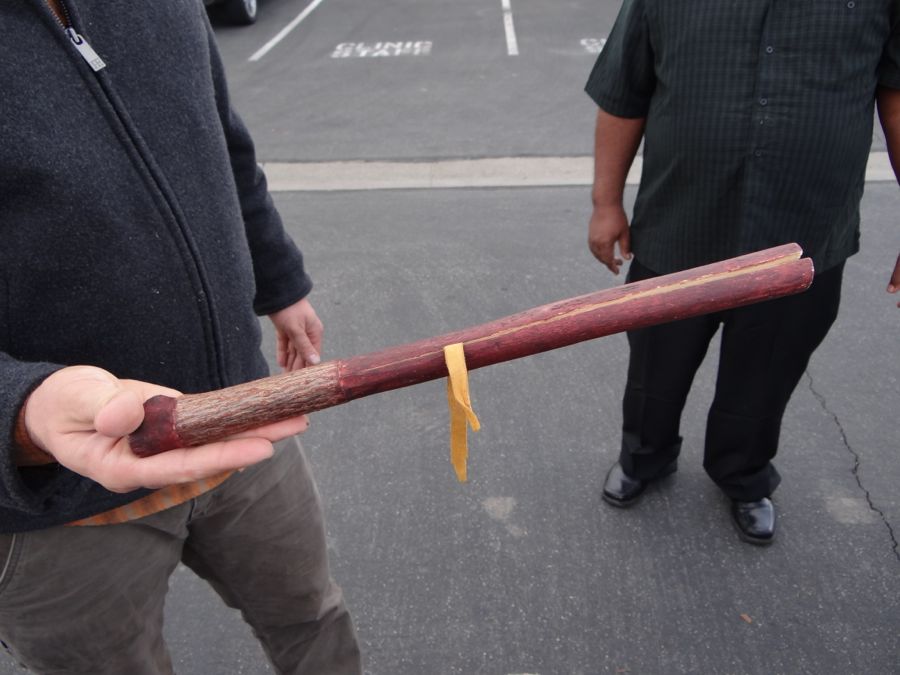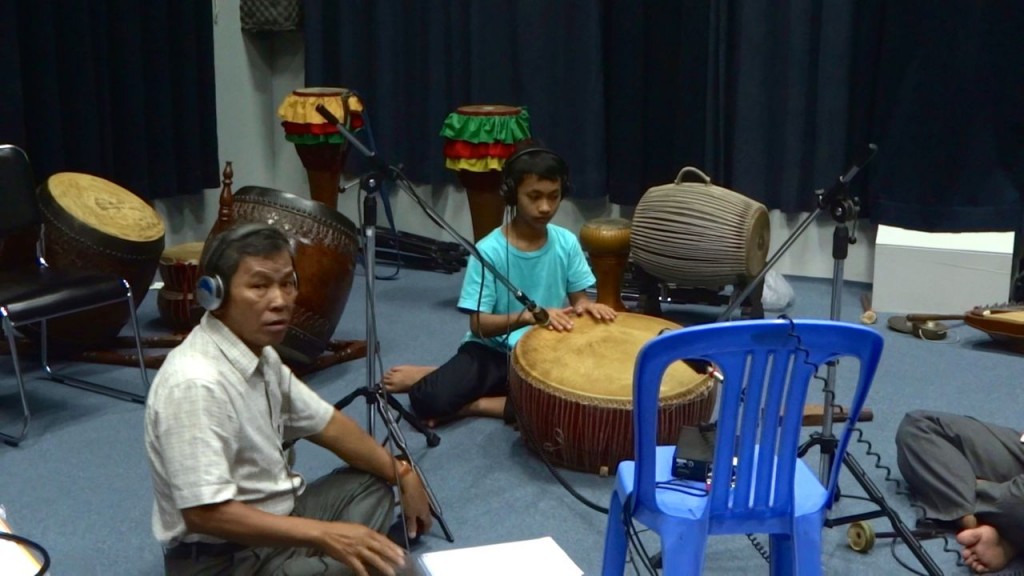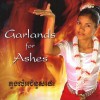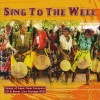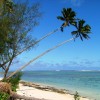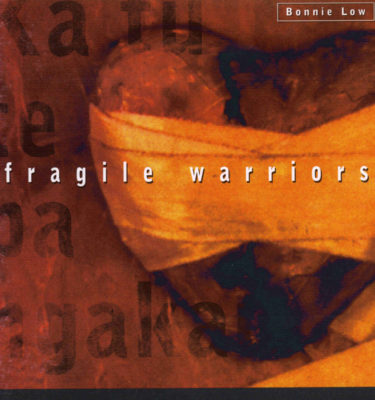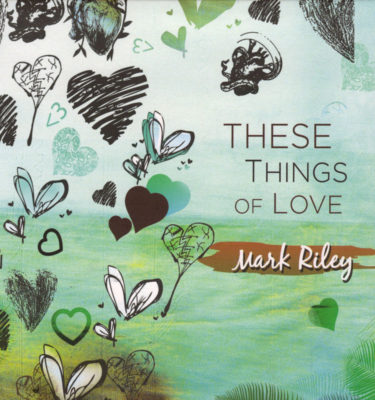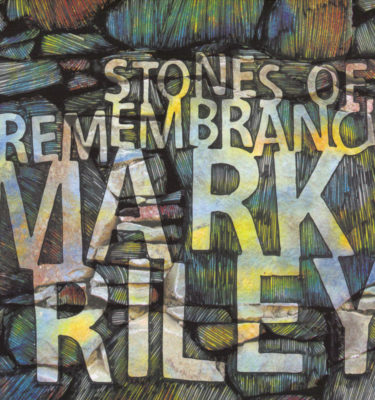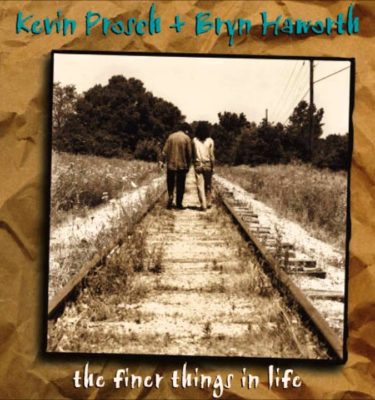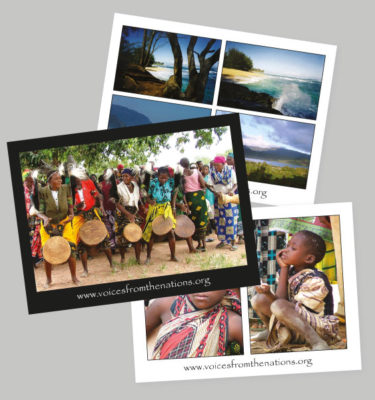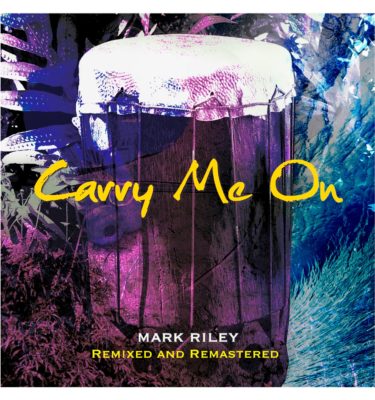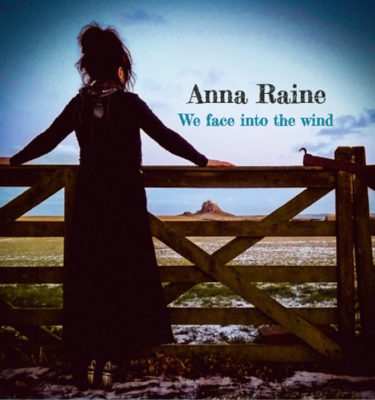It was great to meet up with Tepairu Manea again to learn more about the art of Tahitian drumming. Also very honoured to join him for the Coconut Festival at Kapa’a – met some more great players. Here are some of the instruments we were using during the event.
Today whilst wandering around a local market in Cancun, Mexico we met Enrique and Porfirio – marimba players. They played a song from Chiapas, where it is thought that the origins of this wonderful wooden instrument came about. Versions of this instrument from Africa i.e.. balafon came to Central America and a musician from Chiapas, expanded the original marimba to include the chromatic scale by adding another row of bars, like the black keys on the piano.
I read in one article that “It is indeed difficult to walk down any street within the state without hearing “las maderas que cantan” or what Chiapans affectionately call “the wood that sings.”
So are there any similarities with our modern day xylophone? I am glad you asked – yes. It is the same instrument with two noticeable differences. Firstly, in the Mexican tradition most of the time there will be several musicians performing on a single instrument, and secondly the instrument has a very distinctive “buzz” that is an integral part of the Mexican sound.
We spent a wonderful few days with Jerry and Leslie Chapman in Washington State learning about the stories and traditions behind drum making. Jerry, Stó:lō Nation, has been making drums for a number of years and together we shared our respective drum restoring and designing traditions.
A moment of spontaneous drum music during a gathering at the Santa Ynez reservation in California. The two voices are a male Pueblo Indian chant and a female voice singing in Hebrew.
A wonderful drum, I managed to pick up on my travels in India. Whereas the Tabla and Pakhavaj are used more in classically influenced situations the Dholak is widely used in folk music in India.
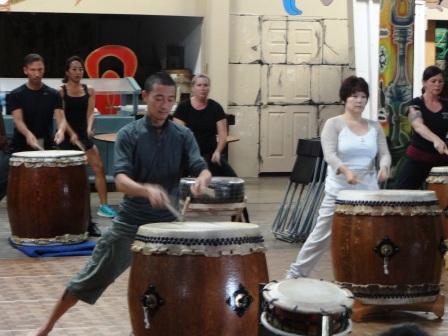 I find it fascinating how different styles of drum groups evolve. I have found a taiko group here in San Diego that have been playing together for many years and get together to practise a few times a week. ( I managed to get in for a couple of lessons) I was first introduced to taiko through a workshop i did in the UK with the Kodo drummers who are based on Sado Island in Japan. Read More
I find it fascinating how different styles of drum groups evolve. I have found a taiko group here in San Diego that have been playing together for many years and get together to practise a few times a week. ( I managed to get in for a couple of lessons) I was first introduced to taiko through a workshop i did in the UK with the Kodo drummers who are based on Sado Island in Japan. Read More
This drum is used in southern India, often a counterpart to the Pakhawaj. The Mridangam is the most important drum in Karnatic music.
Thanks Mike Simpson for sharing this wonderful percussion ensemble on a lake in Siberia – a very COOL sound!

